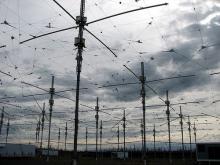New Exhibition Details The Exploitation of Human Zoos
In 1906 a Mbuti pygmy (pictured above) from the Congo was put on display in the New York Bronx Zoo. The pygmy, Ota Benga, was a petite man with a kind face and, a particular trademark of his “character”, a mouth full of sharpened teeth. Ota Benga had been promised repatriation to his native country but, having proven such a popular attraction, was denied. As a result he committed suicide. Ota Benga is just one example of the people behind the stories that these museums created around their displays.
Former French football start Lilian Thurman is the curator of this new gallery, using the stories of these people to campaign against racism and intolerance. Furthermore, Thurman has his own connection to this type of human degradation. His World Cup team-mate Christian Karembeu’s great grand-parents were brought to Paris from New Caledonia as ambassadors. However, upon arriving they were placed in a cage and displayed in Paris and in Germany as “cannibals”.
These kinds of displays, human zoos, “living” museums, circuses and mock villages were highly popular in the 19th and early 20th centuries. The novelty appealed to people’s innate tendency toward voyeurism, while curators often used them for highly politicized purposes. Some justified imperial colonialism by displaying the very “savages” that the nations were attempting to civilize. Others, toward the end of the 19th century, used these kinds of displays to promote a kind of racial hierarchy, branding the “specimens” as lower on the path of human evolution and justifying a host of discriminatory practices, from Christian missions to eugenics.
Although the practice waned in the latter half of the 20th century, the last known showing of a “human spectacle” was of Congolese tribesmen in Belgium in 1958. With the advent of cinema and television, and a change in social attitude, society’s need for voyeuristic entertainment seems to be largely satisfied by actual performers. However, reality television has given rise to an entirely new form of human spectacle: people willing to place themselves on a viewing stage (in this case, on camera) in exchange for a degree of fame and popularity. The question remains, with shows like Real Housewives and Celebrity Rehab, we somehow have turned the tables on human exploitation. The “freaks” are now the rich and famous, while colonial cultures in some parts of the world pick up Toddlers and Tiaras on satellite TV.
What Is A Window Area?
If you had a huge situation map like in one of those cop dramas, and you used it to map all of the weird phenomena that get reported from time to time, you would find that a lot of the dots were clustered in a few “high strangeness areas,” also known as “window areas”- the Bridgewater Triangle, the Burlington Triangle and others.
A lot of people have presented a lot of different explanations for window areas, but here's the problem. It isn't just that one or two phenomena cluster in a particular place, it's that all manner of weird phenomena cluster in the same places. The Bridgewater Triangle, for instance, gets more than its share of cattle mutilations, UFO sightings, black helicopters, Satanic cults, phantom hitch-hikers, thunderbirds and giant black snakes.
Why would UFOs, Bigfeet, Satanists, and giant black snakes all be interested in this one little area south of Boston? None of the standard explanations really seem to make a lot of sense. So here (in the spirit of Charles Fort) is what I propose:
Window areas are not really home to unusually large numbers of hairy hominids, nor are they especially attractive to alien visitors. They are simply “fey” places, places that are inherently weird and numinous. In these areas, things get really weird every now and then- weird in ways and on levels we can't even describe- and sometimes someone happens to be there to witness it. Because the human mind cannot directly represent this numinous strangeness, it translates it into whichever culturally appropriate mythological archetype springs up first in the unconscious mind of whoever happens to be there. To a medieval person, it might have been fairies. To a modern person, it could be UFOs instead.
This is the only explanation I can think of to account for window areas. Actually, I can think of other explanations but not interesting ones so I won't waste my time with them!
Weird Sounds from the Sky
Alien Skull Found in Peru?
The Mall Won't Spy On Your Cell Phone - For Now
Do Plants Feel?
Werewolves
A werewolf is a man who turns into a furry half-wolf, half-man at the full moon after being bitten by another werewolf, right? According to Hollywood, yes. According to any traditional werewolf folklore, no.
In werewolf folklore, a werewolf can be one of a few things. An outlaw or warrior dressed in a wolf's skin, according to the ancient Saxons and Vikings. A serial killer showing “wolfish” qualities- medieval people often interpreted what we would call serial killers as being werewolves. A sorcerer capable of sending his spirit out of his body in the shape of a wolf. A witch who uses an herbal hallucinogenic ointment to induce visions of shapeshifting into wolf form. A sub-type of vampire, according to Eastern European lore. A type of ghoul, feeding on the corpses of the recently dead.
The concept of werewolves and shapeshifters in general is much more fluid and complex in the authentic folklore than it is in the fictional creations of novelists and screenwriters. It includes the idea of physical transformation (into a wolf, not a wolf-man), but it can also refer to possession by a wolf spirit, astral travel, lucid dreaming and psychological identification with the dark, ferocious “animal” aspects of the subconscious.
Being folklore, it does not distinguish clearly between these different categories, so that a mad bandit dressed in a wolf's skin is thought of as having “changed into” a wolf, as is a sorcerer or shaman in a trance state who we would say is “only dreaming” of being a wolf. If you want to understand the magical worldview of the ancient world, you have to understand this ambiguity.
CDC Offers Preparedness Tips For The Zombie Apocalypse
The Myth of Holiday Suicides









